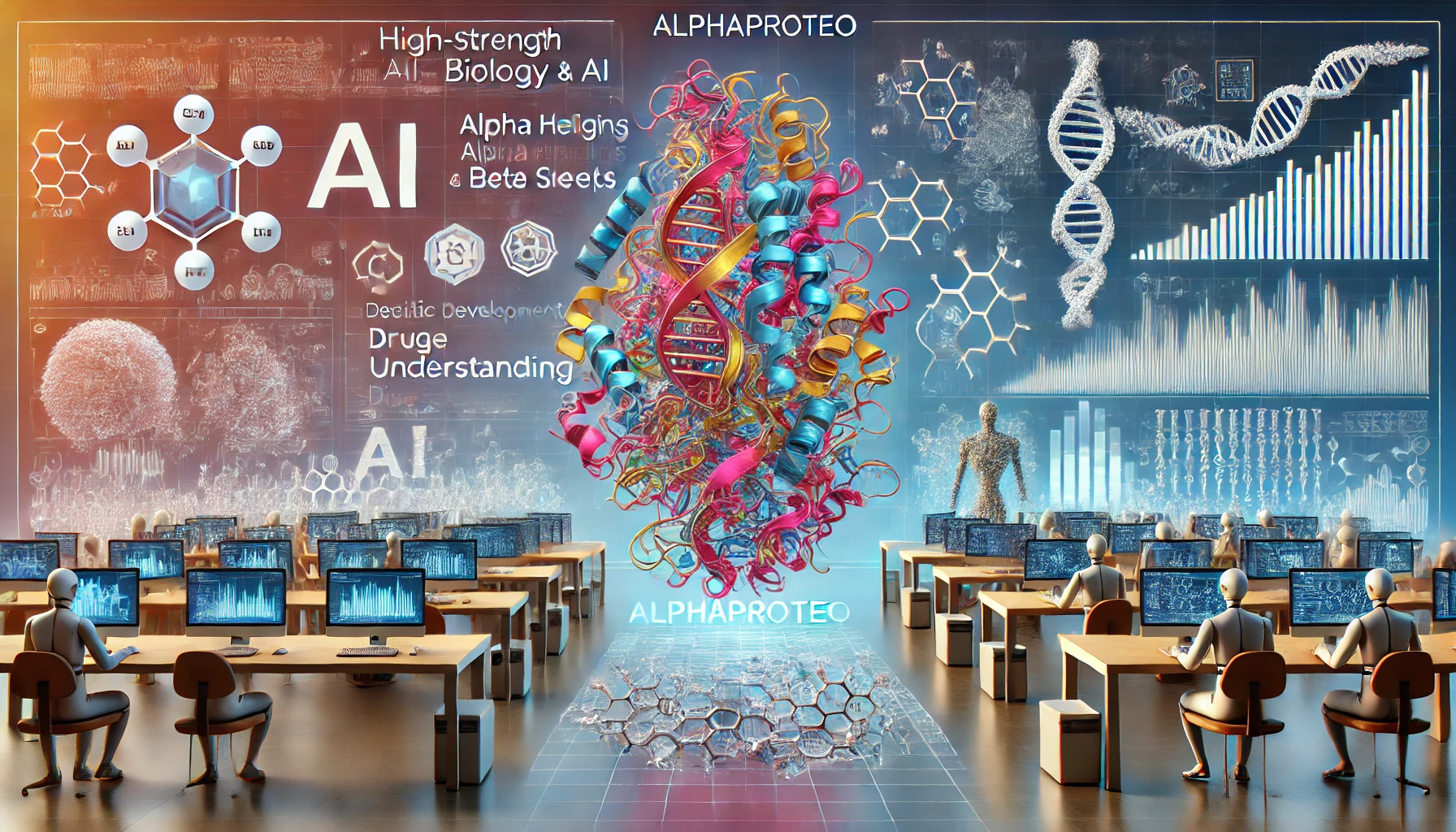AI Designing Proteins
Highlights
1. AlphaProteo, a new system developed by Google DeepMind, generates novel proteins designed to bind to target molecules.
2. Anthropic has introduced Claude Enterprise.
3. MiniMax, a cutting-edge AI video generator, excels at producing hyper-realistic human movement.
4. David Game College in London is piloting the UK’s first AI-led class.
5. Some researchers predict that the generative AI market will be dominated by a few key players.
6. Collaborating with AI has been shown to be more creative than simply editing its output.
Innovation Insights
1. Charting a path to the data- and AI-driven enterprise of 2030 (McKinsey)
By 2030, companies will need to fully embrace data ubiquity, embedding data and AI into every process, decision, and interaction to remain competitive. To unlock real value, data leaders must focus on integrating proprietary data with AI models, ensuring robust data governance, and scaling AI-driven innovations across their organizations. Addressing the flood of unstructured data—90% of available data—will be critical, as will investing in new skills and technologies to handle it. Finally, emerging AI risks like evolving malware and bias in AI models will demand proactive and sophisticated risk management strategies.
2. Openness, control, and competition in the generative AI marketplace (Ideas Made to Matter)
The generative AI market is expected to be dominated by a few key players due to control over essential infrastructure and capabilities, despite the rise of open-source models like Meta’s Llama. Access to complementary assets, such as training environments, massive datasets, and safety systems, is crucial for commercial success, giving large firms a significant advantage. While open-source initiatives create some optimism, they are unlikely to break the market power of incumbents. The market may evolve into a platform structure where a few firms control foundation models, while third-party developers build applications. Policymakers are advised to take a cautious, “watchful waiting” approach to regulating this nascent industry.
3. Establishing the importance of co-creation and self-efficacy in creative collaboration with AI (Scientific Reports)
Two experimental studies on generative AI’s impact on creativity found that people were more creative when writing poems independently compared to editing AI-generated poems. However, when people co-created with AI, rather than just editing, their creativity improved, with creative self-efficacy playing a key role in this process.
AI Innovations
1. Biomedical use of AI
AlphaProteo, a new AI system, generates novel high-strength protein binders that significantly improve drug development, disease understanding, and biological research, achieving better binding affinities and experimental success rates than previous methods (Google).
The AI tool RENAISSANCE, developed by researchers at EPFL, revolutionizes the creation of kinetic models for cellular metabolism by integrating diverse cellular data to map metabolic states accurately (Nature Catalysis).
AI could help doctors identify high-risk heart patients by analyzing medical records to detect undiagnosed conditions and adjust medications (BBC).
A speech neuroprosthesis successfully enabled a person with ALS and severe dysarthria to communicate at 97.5% accuracy and 32 words per minute after brief training, by decoding neural activity from attempted speech into text and vocalizing it with text-to-speech software (New England Journal of Medicine).
2. Everyday assistant
Amazon is turning to Claude AI to power a new version of Alexa, launching in October, with plans to charge users for advanced features while maintaining a free basic version (Reuters).
Ant Group, backed by Alibaba, launched an AI-powered “life assistant” app called Zhixiaobao, helping users with tasks like ordering meals and booking services, while also integrating with Alipay for payments (Tech Xplore).
3. Ask photos
Google’s AI-powered “Ask Photos” feature, which lets users search their photo libraries using complex natural language queries, has begun its U.S. rollout in early access, allowing users to ask detailed questions about their photos, such as identifying themes or recalling specific events, using the AI’s advanced understanding of photo content and metadata (TechCrunch).
4. Enterprise AI
Anthropic has launched Claude Enterprise, a new AI subscription plan aimed at businesses, offering enhanced administrative controls, security, and large context windows (TechCrunch).
5. Supercomputer
Elon Musk’s xAI has brought the Colossus supercomputer online, utilizing 100,000 Nvidia H100 GPUs for AI training, with plans to expand to 200,000 GPUs by adding 50,000 H100 and 50,000 H200 units in the coming months (Tom’s Hardware).
6. Video
MiniMax, a new AI video generator from China, excels in generating hyper-realistic human movement and promises significant improvements in upcoming updates (Tom’s Guide).
7. Coding
Replit Agent is an experimental AI tool that helps users build software projects by understanding natural language prompts, making development easier for users of all skill levels, with early access available to Replit Core and Teams subscribers (Replit).
8. Multimodal AI
GroqCloud has launched LLaVA v1.5 7B, a multimodal AI model that integrates image, audio, and text processing, enabling developers to create innovative applications such as visual question answering, image captioning, and multimodal dialogues for various industries (Groq).
9. Data collection and analysis
A startup called Paradigm has launched AI-powered spreadsheet software that uses generative AI to automate data collection and manipulation, offering a productivity boost for industries like consulting and recruiting (VentureBeat).
10. AI teacher
David Game College in London is piloting the UK’s first AI-taught class, where 20 students learn through AI platforms and virtual reality headsets, with the AI system personalizing lessons based on each student’s strengths and weaknesses (TechRadar).
Other Innovations
1. Detecting climate tipping points
The UK’s Advanced Research and Invention Agency is investing £81 million in developing early warning systems to detect climate tipping points, focusing on the melting Greenland Ice Sheet and the weakening North Atlantic Subpolar Gyre (MIT Technology Review).
2. Robots
1X Technologies has unveiled NEO, a humanoid robot designed for home use, capable of jogging, cleaning, fetching items, and assisting people with mobility challenges (Newsweek).
3. Arthritis treatment
Researchers in China have developed a hydrogel that, when injected, can slow or stop the progression of early-stage osteoarthritis by improving joint lubrication and reducing friction (Advanced Materials).
4. Cyborg worm
Scientists have created “cyborg worms” by linking AI to the nervous systems of millimeter-long worms, enabling the AI to guide them toward food through optogenetic stimulation, demonstrating collaboration between biological brains and AI (Scientific American).







